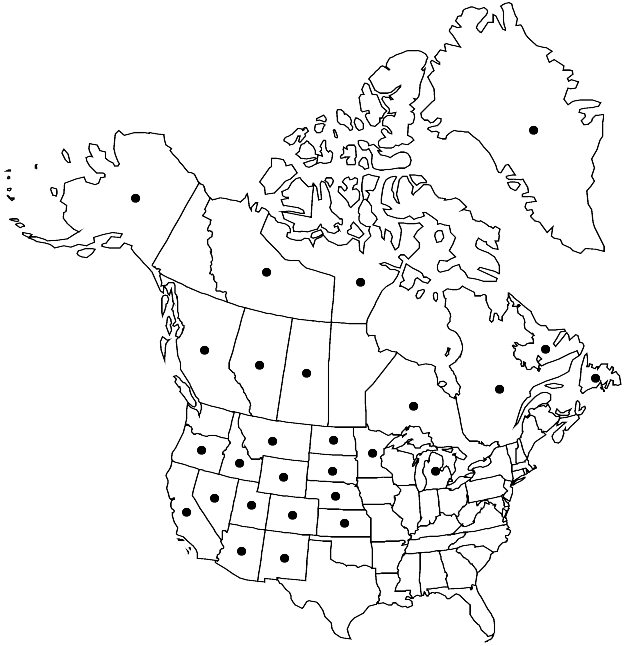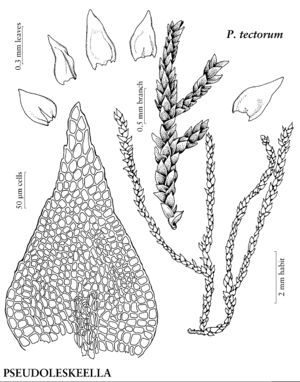Pseudoleskeella tectorum
in H. G. A. Engler and K. Prantl, Nat. Pflanze n fam. 229[I,3]: 997. 1907.
Plants dark olive green or rarely yellow-green. Stems tightly appressed to substrate, branches appressed. Stem-leaves ± catenulate when dry, not homomallous, ovate, abruptly narrowed to apex, concave, not plicate, 0.4–1.2 mm, 1.5–2: 1; base flaring; margins plane or rarely recurved proximally, entire; apex short-acuminate, sometimes falcate; costa usually double, or single, 2-fid, or sometimes ecostate, weak, not reaching mid leaf; medial laminal cells 1–2 (–3):1, walls firm, not incrassate. Branch leaves ovate to suborbicular, 0.4–0.8 mm; laminal cell-walls moderately incrassate. Stoloniferous leaves broadly ovate or suborbicular. Seta redbrown, 0.1–0.2 cm. Capsule inclined, subcylindric, asymmetric, 1.5–2.5 (–3) mm. Spores 10–18 µm.
Phenology: Capsules mature summer.
Habitat: Shaded calcareous rock, shaded tree bases or wood
Elevation: low to high elevations (0-4000 m)
Distribution

Greenland, Alta., B.C., Nfld. and Labr., N.W.T., Nunavut, Ont., Que., Sask., Alaska, Ariz., Calif., Colo., Idaho, Kans., Mich., Minn., Mont., Nebr., Nev., N.Mex., N.Dak., Oreg., S.Dak., Utah, Wyo., Eurasia
Discussion
Pseudoleskeella tectorum is distinguished by the dark green, tightly appressed, catenulate leaves, and weak costa. Thin mats of this species can be become quite extensive over time, covering the faces and overhangs of shaded boulders and cliffs.
Selected References
None.
Lower Taxa
"broad" is not a number.
